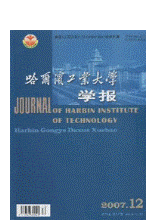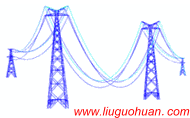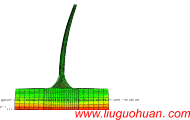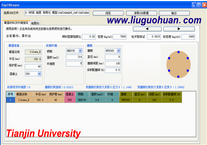Structural Response Analysis in Time and Frequency Domain Considering both Ductility and Strain Rate Effects under Uniform andMultiple-support Earthquake Excitations作者: Liu-Guohuan,Jijian Liang, Chao Lian, Mi Zhao |
||||||
下载次数:
次 更多论文下载...
PDF格式(左键浏览,右键另存):
2016,XX(X), Earthquake and Structures
Abstract: The structural dynamic behavior and yield strength considering both ductility and strain rate effectsare analyzed in this article. For the single-degree-of-freedom (SDOF) system, the relationship between therelative velocity and the strain rate response is deduced and the strain rate spectrum is presented. The ductilityfactor can be incorporated into the strain rate spectrum conveniently based on the constant-ductility velocityresponse spectrum. With the application of strain rate spectrum, it is convenient to consider the ductility andstrain rate effects in engineering practice. The modal combination method, i.e., square root of the sum of thesquares (SRSS) method, is employed to calculate the maximum strain rate of the elastoplasticmultiple-degree-of-freedom (MDOF) system under uniform excitation. Considering the spatially varyingground motions, a new response spectrum method is developed by incorporating the ductility factor and strainrate into the conventional response spectrum method. In order to further analyze the effects of strain rate andductility on structural dynamic behavior and yield strength, the cantilever beam (one-dimensional) and thetriangular element (two-dimensional) are taken as numerical examples to calculate their seismic responses intime domain. Numerical results show that the permanent displacements with and without considering the strainrate effect are significantly different from each other. It is not only necessary in theory but also significant inengineering practice to take the ductility and strain rate effects into consideration.
Keywords: strain rate effect; ductility effect; multiple-support earthquake excitations; strain rate spectrum;response spectrum method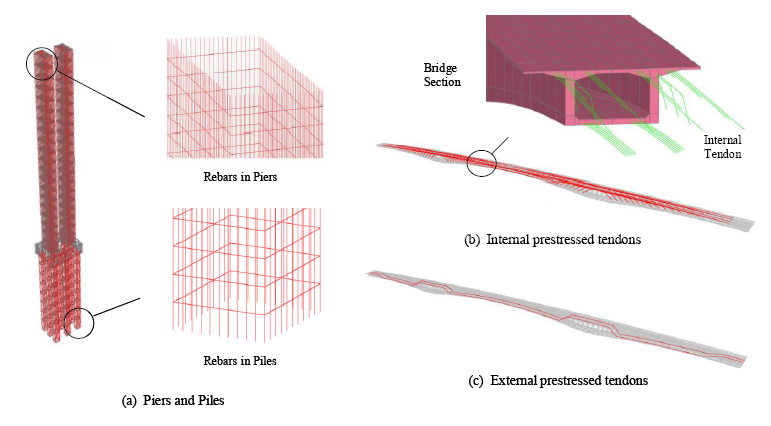 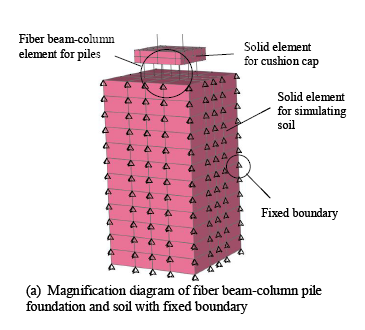
Introduction: The yield strength and dynamic behaviors of most materials involved in civil engineeringare sensitive to strain rate. Currently, much attention is focused on the strain rate sensitivitiesfor many kinds of materials. Huh et al. (2009) presented stress-strain curves of steel sheets foran auto-body obtained at intermediate strain rates with a servo-hydraulic type high speedtensile testing machine. Li and Li (2010) investigated the dynamic properties of reinforcingsteels of various strengths using a MTS New 810 electro-hydraulic servo-controlled testingsystem with a range of strain rate between 2.5×10-4/s and 0.1/s, which covers the range thatmight be experienced during earthquakes, and developed a rate-dependent cyclic constitutivemodel of reinforcing steel through improving the Hoehler model. Furthermore, Li and Li(2012) studied the effects of strain rate on the reinforced concrete structure under seismicloading. Based on the test results, dynamic increasing factors (DIF) which are functions ofstrain rate and quasi-static yielding strength of reinforcing steel are gotten. These resultsprovide a reference for reinforced concrete frame structure in seismic design. The effects ofstrain rate on strength and deformation characteristics of soil-lime were investigated byAlzubaidi and Lafta (2013). It is observed that for soil-lime mixture at different curing periods,the undrained shear strength, initial modulus of elasticity and the cohesion increase to amaximum and then decrease with increasing strain rate.
In earthquake engineering, the effect of strain rate on the structural dynamic behavior isignored in the early years. With the application of modern computing facilities and methods,more and more researchers pay attention to the strain rate effect in engineering practice. Shingand Mahin (1988) conducted a series of pseudo-dynamic tests considering the strain rateeffects of structures concluded that the dynamic strength is approximately 30% higher thanthe static strength. A dynamic constitutive model for the concrete structure in seismic designpractice is recommended by CEBFIP model code (1990). Cervera et al. (1996) analyzed theKoyna dam considering the strain rate effect of concrete. The results show that the strain rateε is higher than 103s1 and the dynamic tensile strength increases by 45%. Chopra (2001,2004) studied the relationship between the peak deformations of inelastic and correspondingelastic SDOF systems and obtained the fitting formulae for the relationship. Wang et al. (2013)investigated the effects of ultimate strain and strain rate of materials on the collapsemechanism, routine and capacity of transmission tower-line system. Results show that thestrain rate has a significant influence on the top displacement and base shear of tower undercertainseismicrecords.LiandLarry(2013)presentedresearchthatusedsingle-degree-of-freedom systems to represent low-ductility CBFs, where brace fracturecauses a sudden loss of strength and stiffness. For the cases considered, the ductility capacityof the reserve system was typically a more critical constraint than global drift capacity, andreserve capacity is demonstrated to appreciably influence seismic collapse behavior, whereasprimary system strength has a small influence.
The response spectrum regarded as a basic concept in earthquake engineering provides aconvenient means to summarize the peak response of all possible elastic SDOF systems subjected to a particular component of ground motion (Hao 1991; Kiureghian andNeumnhofer 1992; Hao and Xiao 1996; Su et al. 2006; Yu and Zhou 2008; Xu 2010; Guo2013; Su and Shi 2013; Tian et al. fig2010, 2014). Therefore, the strain rate spectrum ispresented in this paper and a new response spectrum method based on structural ductility andstrain rate spectrum is developed for the dynamic analysis of the MDOF multi-supportsystem.
Conclusions
The effects of ductility and strain rate on the structural dynamic behaviors and yieldstrength are investigated in this paper. On the basis of theoretical deduction, three numericalmodels are taken as examples to calculate their displacement response and strength demand.The main conclusions are summarized as follows.
The relationship between relative velocity and strain rate response is deduced and thestrain rate spectrum is presented. The ductility factor is incorporated into the strain ratespectrum based on the constant-ductility velocity response spectrum. It is convenient toestimate the maximum strain rate of the structure through the strain rate spectrum. Considering the spatially varying ground motions, a new response spectrum method isdeveloped by incorporating the ductility factor and the strain rate into the conventionalresponse spectrum method to estimate the maximum strain rate of structure. Numerical results show that the permanent displacements, as well as the deformationhistories, are significantly influenced by strain rate effect. Furthermore, considering theductility and strain rate effects, the strength demands are significantly reduced. The resultsindicate that it is not only necessary in theory but also significant in engineering practiceto take the ductility and strain rate effects into consideration.
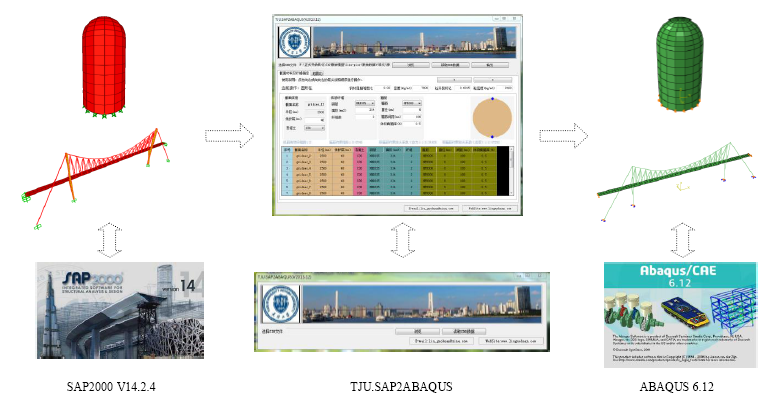 C # 语言编制,TJU.SAP2ABAQUS,直接读取.SDB 格式文件 |
||||||
| welcome to www.liuguohuan.net |
| 天津大学 建筑工程学院 ; 天津大学 前沿技术研究院; 国家重点实验室-水利工程仿真与安全 |
